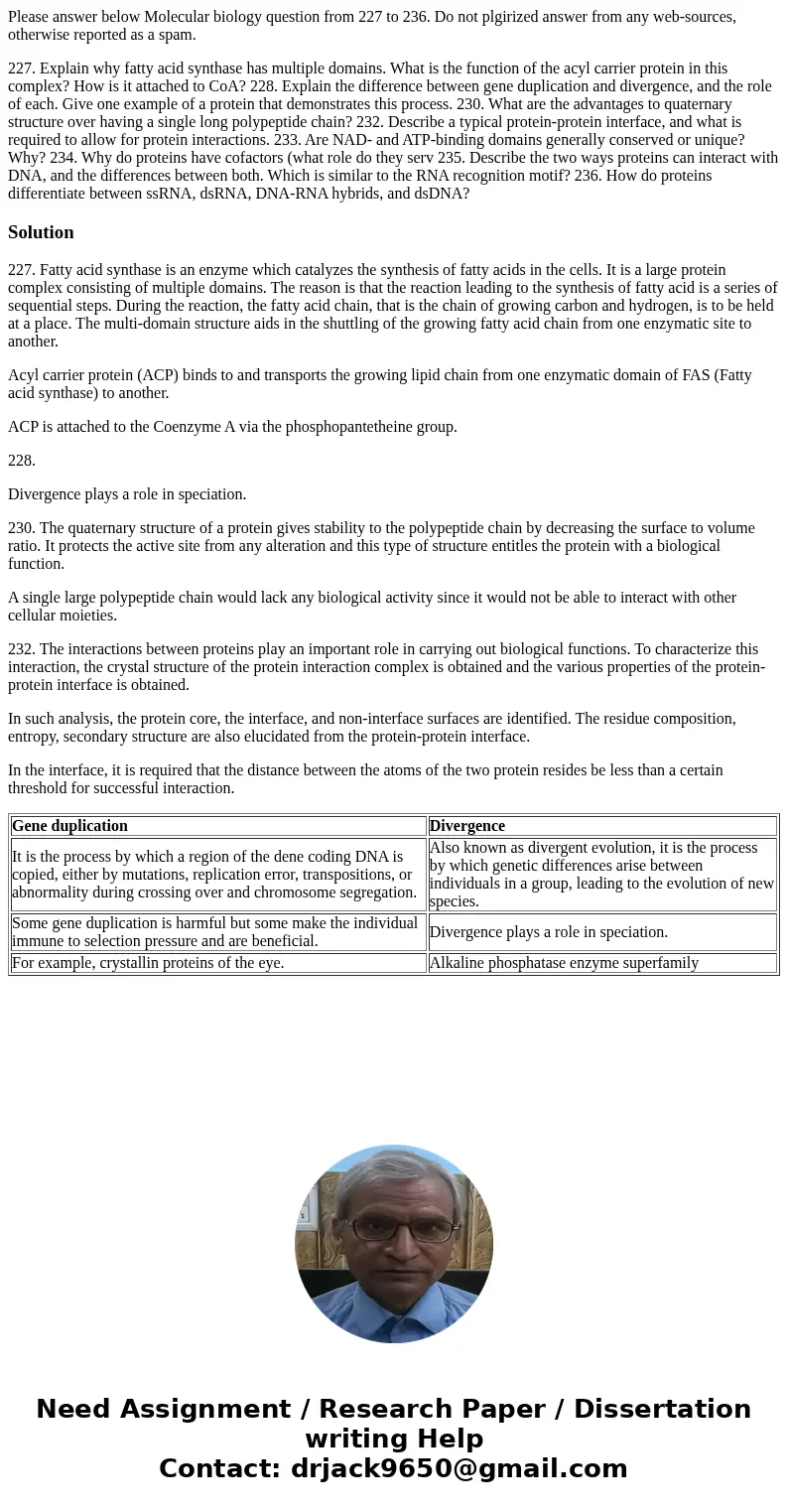Please answer below Molecular biology question from 227 to 2
Please answer below Molecular biology question from 227 to 236. Do not plgirized answer from any web-sources, otherwise reported as a spam.
227. Explain why fatty acid synthase has multiple domains. What is the function of the acyl carrier protein in this complex? How is it attached to CoA? 228. Explain the difference between gene duplication and divergence, and the role of each. Give one example of a protein that demonstrates this process. 230. What are the advantages to quaternary structure over having a single long polypeptide chain? 232. Describe a typical protein-protein interface, and what is required to allow for protein interactions. 233. Are NAD- and ATP-binding domains generally conserved or unique? Why? 234. Why do proteins have cofactors (what role do they serv 235. Describe the two ways proteins can interact with DNA, and the differences between both. Which is similar to the RNA recognition motif? 236. How do proteins differentiate between ssRNA, dsRNA, DNA-RNA hybrids, and dsDNA?Solution
227. Fatty acid synthase is an enzyme which catalyzes the synthesis of fatty acids in the cells. It is a large protein complex consisting of multiple domains. The reason is that the reaction leading to the synthesis of fatty acid is a series of sequential steps. During the reaction, the fatty acid chain, that is the chain of growing carbon and hydrogen, is to be held at a place. The multi-domain structure aids in the shuttling of the growing fatty acid chain from one enzymatic site to another.
Acyl carrier protein (ACP) binds to and transports the growing lipid chain from one enzymatic domain of FAS (Fatty acid synthase) to another.
ACP is attached to the Coenzyme A via the phosphopantetheine group.
228.
Divergence plays a role in speciation.
230. The quaternary structure of a protein gives stability to the polypeptide chain by decreasing the surface to volume ratio. It protects the active site from any alteration and this type of structure entitles the protein with a biological function.
A single large polypeptide chain would lack any biological activity since it would not be able to interact with other cellular moieties.
232. The interactions between proteins play an important role in carrying out biological functions. To characterize this interaction, the crystal structure of the protein interaction complex is obtained and the various properties of the protein-protein interface is obtained.
In such analysis, the protein core, the interface, and non-interface surfaces are identified. The residue composition, entropy, secondary structure are also elucidated from the protein-protein interface.
In the interface, it is required that the distance between the atoms of the two protein resides be less than a certain threshold for successful interaction.
| Gene duplication | Divergence |
| It is the process by which a region of the dene coding DNA is copied, either by mutations, replication error, transpositions, or abnormality during crossing over and chromosome segregation. | Also known as divergent evolution, it is the process by which genetic differences arise between individuals in a group, leading to the evolution of new species. |
| Some gene duplication is harmful but some make the individual immune to selection pressure and are beneficial. | Divergence plays a role in speciation. |
| For example, crystallin proteins of the eye. | Alkaline phosphatase enzyme superfamily |

 Homework Sourse
Homework Sourse